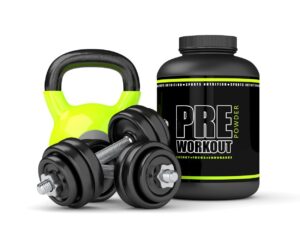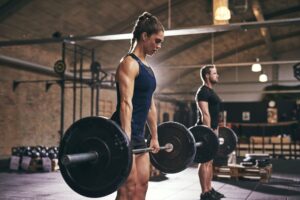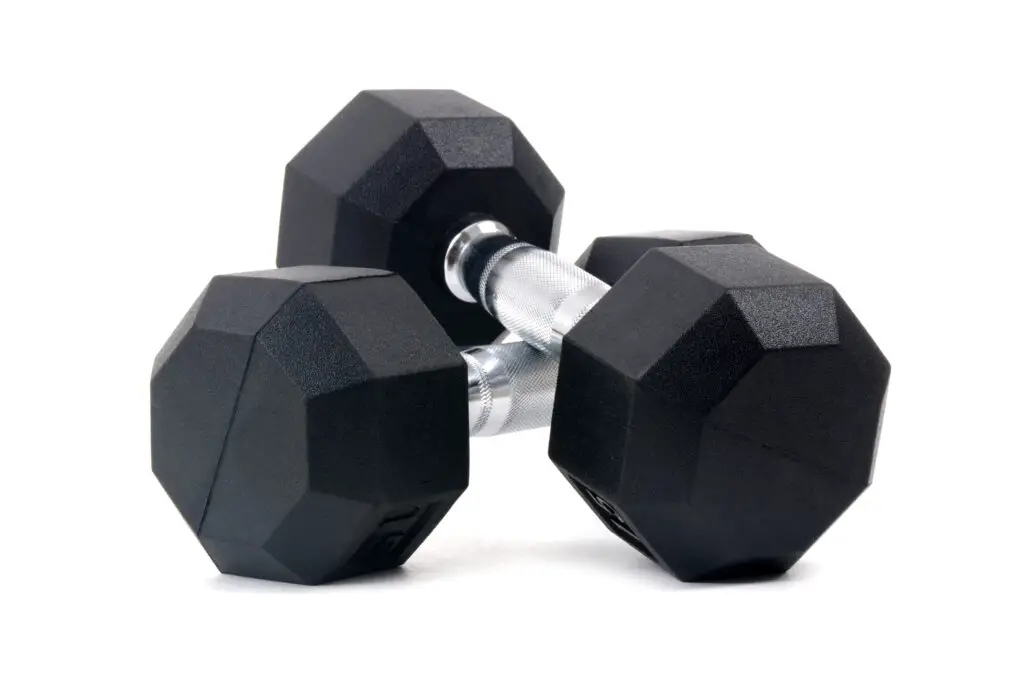
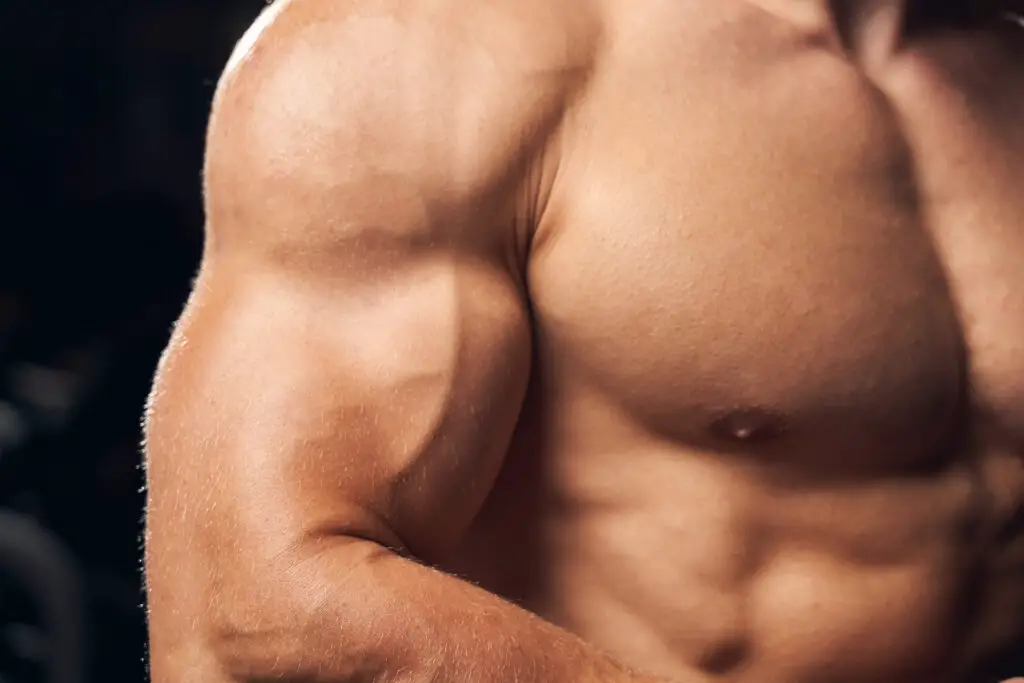
In fitness, a well-defined chest is a highly sought-after goal for many fitness enthusiasts, making dumbbell chest exercises an essential part of any chest workout. This muscle group, consisting of the pectoral muscles (pectoralis major and minor), is essential for having greater control when performing everyday tasks that involve pushing, pulling, and lifting, to having more confidence in your physical appearance, many benefits can be gained from developing a solid chest.
A dumbbell chest workout is an effective way to build strength and definition in your chest muscles. They are easy to perform, require minimal equipment, and can be done from home. Whether you’re a beginner or an experienced gym-goer looking for new ways to challenge your chest muscles, these 11 dumbbell chest exercises are a great addition to your chest-building arsenal and will help you achieve your desired strength and definition goals.
For many, the chest is seen as the body’s focal point, so it’s not surprising that many people focus on building a more muscular and defined chest. However, training the chest is often overlooked or dismissed as an unnecessary luxury for some. In reality, the chest muscles are some of the most essential muscles in the body, and neglecting them could result in negative consequences.
The chest plays a critical role in supporting the entire body, both in strength and stability. When the chest muscles are strong, they can better support the neck and shoulders. This can help reduce neck, back, and shoulder discomfort, common issues for those sitting at desks or performing repetitive activities throughout the day.
In addition to providing support for the body, the chest muscles also contribute to posture and breathing. Stronger chest muscles can help to improve posture, making you appear taller and slimmer. They also support the diaphragm, allowing for deeper, more efficient breaths, which can help to reduce stress levels.
Finally, developing a muscular and defined chest has obvious aesthetic benefits. A firm chest can give the illusion of a narrower waist and contribute to a more defined upper body. With all these benefits in mind, it’s easy to see why working out your chest should be essential to any fitness regime.
Chest Muscles: A Quick Review

Knowing which exercises will best target each muscle group and how they should be performed safely is essential for anyone wanting to build a more muscular and more defined chest. Of course, with all workouts, certain risks are associated with improper form or over-exertion. Therefore, it’s crucial to understand the chest muscles and how they work before starting any workout routine.
Before performing these dumbbell chest exercises, it’s essential to understand the different muscles involved in chest workouts and movements.
Let’s review the muscles involved in chest workouts. The chest comprises three main muscles: the pectoralis major, the pectoralis minor, and the serratus anterior. The larger of the two muscles, the pectoralis major, is responsible for most chest development.
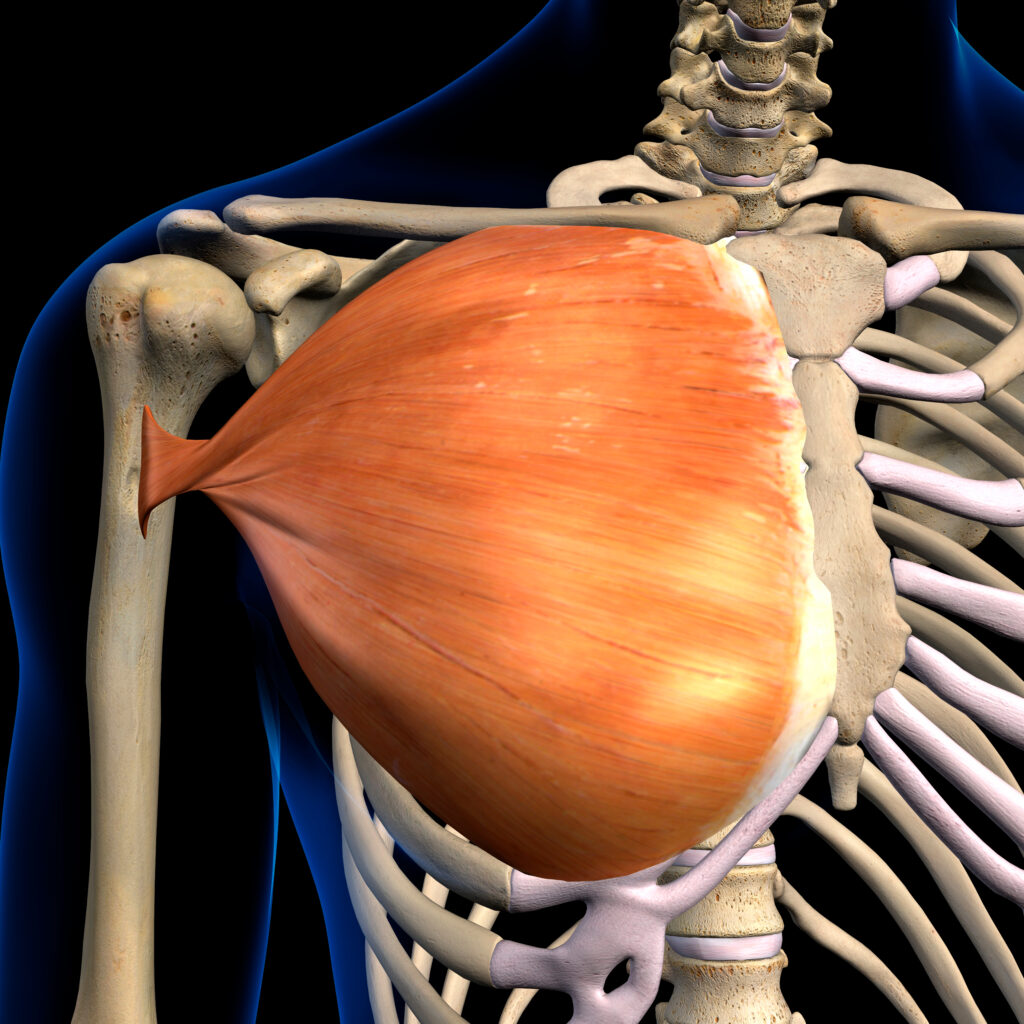
The Pectoralis Major
The pectoralis major is a large fan-shaped muscle that covers the front of the chest, is the most significant muscle in the chest, and is responsible for pushing, pulling, and rotating the arm. It’s also used to support your body during push-ups, dips, and other exercises that involve weight bearing on your arms. To target this muscle, focus on activities that involve pushing or pressing motions such as the chest press, chest flys, and push-ups.
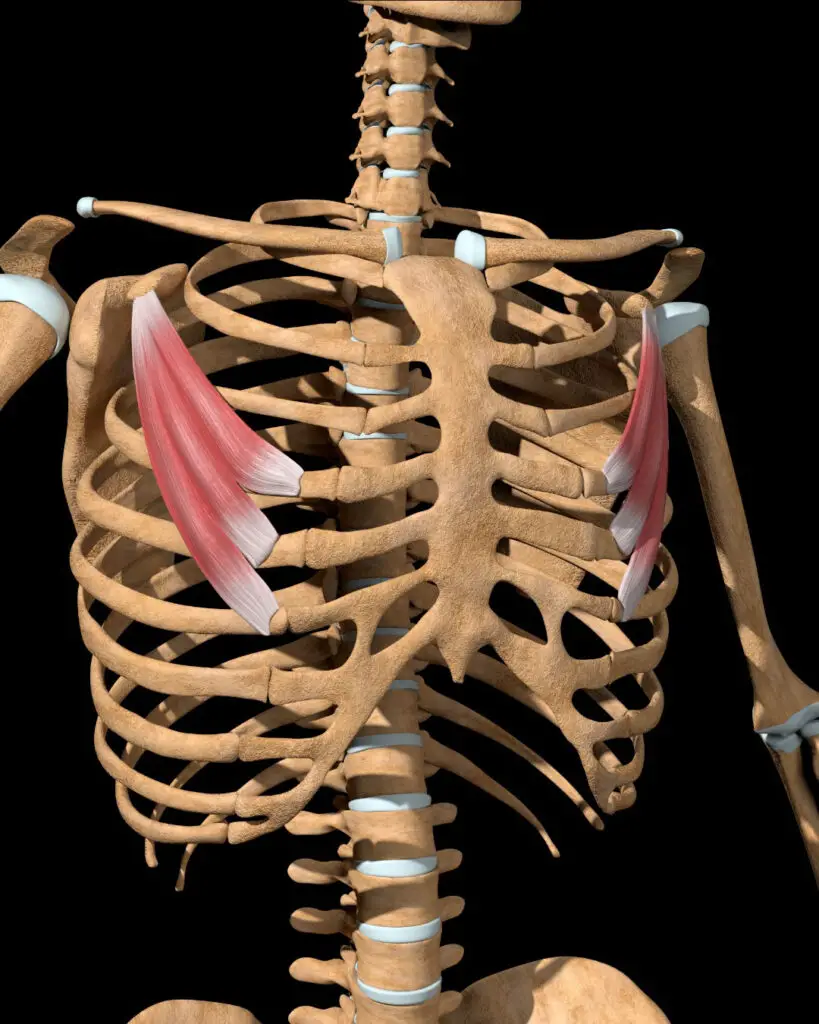
The Pectoralis Minor
The pectoralis minor is a smaller muscle located beneath the pectoralis major. This muscle stabilizes the shoulder joint and helps with movements like protraction and elevation of the scapula. To target this muscle, focus on exercises such as bent-over rows, internal shoulder rotations, and chest flys.
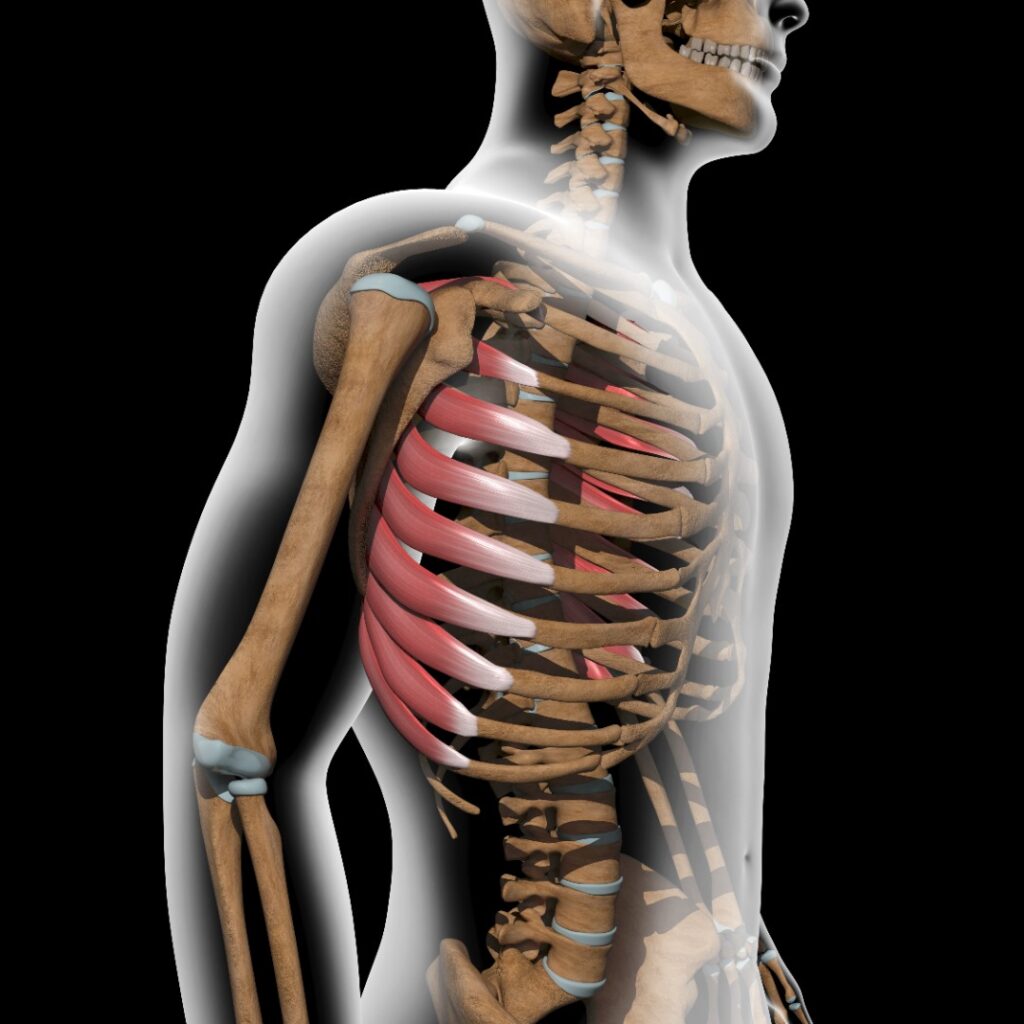
The Serratus Anterior
The serratus anterior also known as the “boxer’s muscle,” is a thin muscle on the side of the chest that helps with breathing and keeping the shoulder blades tight against the rib cage. It’s also used to support your body during activities such as pull-ups, dips, and other exercises that involve weight bearing on your arms. To target this muscle, focus on exercises such as bent-over rows, internal shoulder rotations, and pullovers.
In addition to the pectoral muscles, the triceps, and front deltoids also play a significant role in chest exercises. The triceps extend the arms during pressing movements, while the front deltoids assist in pushing movements and contribute to shoulder stabilization.
Building strength and definition in your chest requires working these three muscles separately. By focusing on specific exercises targeting each muscle, you can create a comprehensive workout routine to help you build strength and definition in your chest.
What are the 11 Best Dumbbell Chest Exercises?
Let’s dive into the 11 dumbbell chest exercises to build strength and definition. These exercises are highly effective in engaging the pectoralis major and pectoralis minor, as well as other supporting muscles.
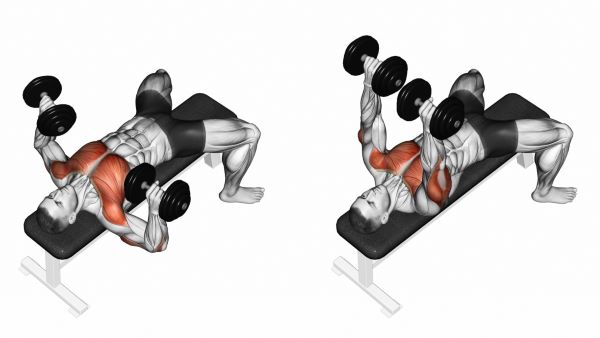
1. Dumbbell Bench Press:
Similar to the traditional bench press, the dumbbell bench press is a classic chest exercise that targets both the clavicular and sternal heads of the pectoralis major and the triceps and front deltoids.
To perform the exercise, lie on a bench with your feet flat on the ground and hold a dumbbell in each hand. Slowly lower the dumbbells until your elbows form a 90-degree angle, then press them back to the starting position. For an extra added bonus, try the reverse grip dumbbell press by changing your hand, with your palms facing towards you, to target more of the outer chest.
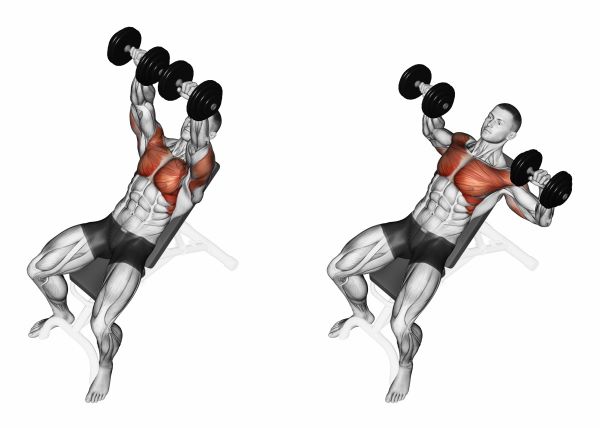
2. Incline Dumbbell Bench Press:
The incline dumbbell bench press targets the upper chest, specifically the pectoralis major’s clavicular head, along with the triceps and front deltoids.
To begin, lie on an incline bench with your feet flat on the ground and hold a dumbbell in each hand. Slowly lower the dumbbells until your elbows form a 90-degree angle, then press them back up in a straight line, to the starting position.
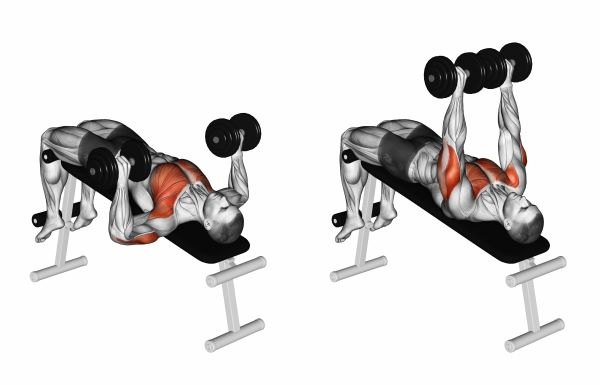
3. Decline Dumbbell Bench Press:
The decline dumbbell bench press targets the lower chest, specifically the sternal head of the pectoralis major, as well as the triceps and front deltoids.
First, lie on a decline bench with your feet flat on the floor, secured, and hold a dumbbell in each hand. Slowly lower the dumbbells until your elbows form a 90-degree angle, then press them back up, in a straight line to the starting position.
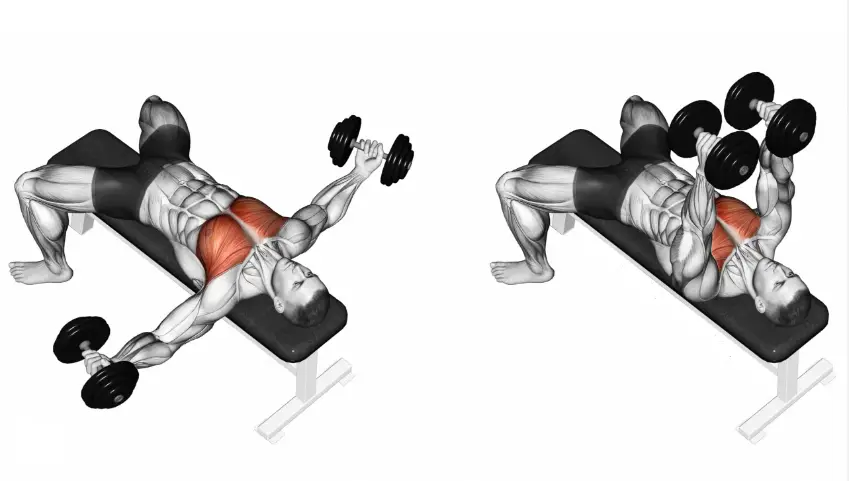
4. Dumbbell Flys:
The Dumbbell fly is one of my favorite exercises that target the entire chest, emphasizing the pectoralis major, biceps, and front deltoids.
To begin, lie on a flat bench with your feet flat on the ground and hold a dumbbell in each hand. Slowly lower the dumbbells to your sides until your arms are parallel to the floor, then bring them back up to the starting position.
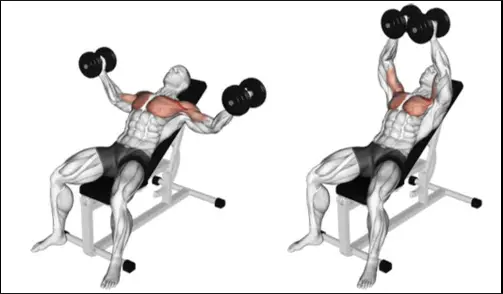
5. Incline Dumbbell Flys:
The incline dumbbell fly targets the upper portion of the chest, specifically the clavicular head of the pectoralis major, along with the biceps and front deltoids. It’s a great compound exercise to help increase the overall size and strength of the chest.
To perform, lie on an incline bench with your feet on the ground and hold a dumbbell in each hand, that is a comfortable weight for you. Lower the dumbbells to your sides until your arms are parallel to the floor, then bring them back up to the starting position.

6. Decline Dumbbell Flys:
The declined dumbbell fly targets the lower chest, specifically the sternal head of the pectoralis major, along with the biceps and front deltoids. This movement helps increase definition and size, as well as, provides a good stretch of the chest muscles.
To start, lie on a decline bench with your feet secured and hold a dumbbell in each hand, once again of a workable weight for you. Lower the dumbbells to your sides until your arms are parallel to the ground, then bring them back up to the starting position.
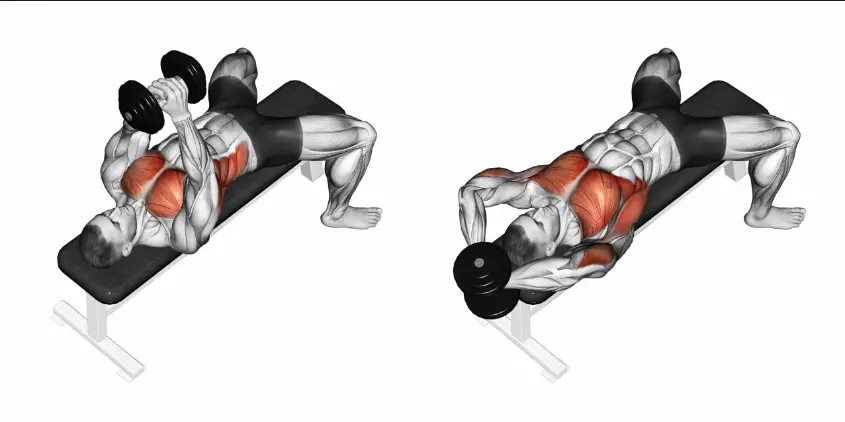
7. Dumbbell Pullovers:
Another of one my favorite and often overlooked dumbbell chest exercise is the dumbbell pullover. This exercise targets the upper portion of the chest, along with the lats and triceps, and helps improve upper body posture.
To begin, lie on a flat bench with your feet shoulder-width apart on the ground, and hold a dumbbell with both hands. Lower the dumbbell behind your head until your arms are parallel to the floor, then bring it back up to the starting position.
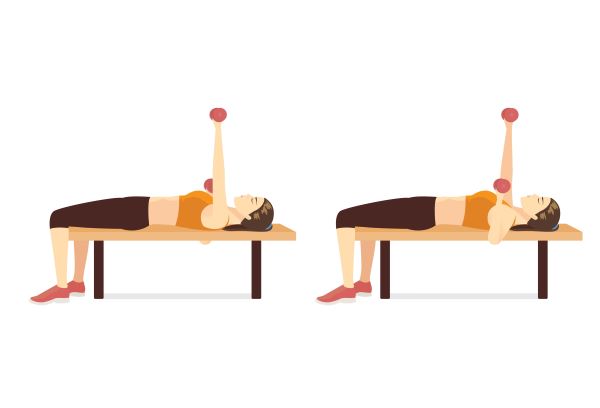
8. One-Arm Dumbbell Bench Press:
This exercise targets the entire chest, emphasizing the pectoralis major, triceps, and front deltoids. One-arm dumbbell bench presses are great exercises for improving muscle imbalances between the left and right sides of the chest.
To start, lie on a flat bench with one arm holding a dumbbell, and the other arm extended out to the side for balance. Lower the dumbbell until your elbow forms a 90-degree angle, then press it back up to the starting position.
9. One-Arm Incline Dumbbell Bench Press:
This exercise targets the upper portion of the chest, specifically the clavicular head of the pectoralis major, along with the triceps and front deltoids.
First, lie on an incline bench with one arm holding a dumbbell and extending the other to the side for balance. Lower the dumbbell until your elbow forms a 90-degree angle, then press it back up to the starting position.
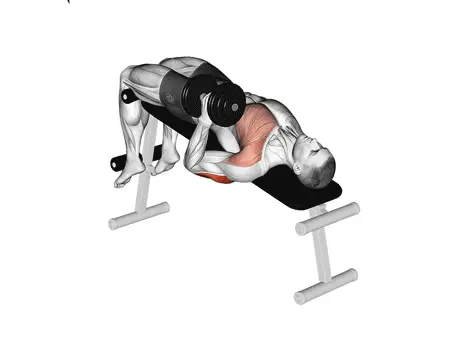
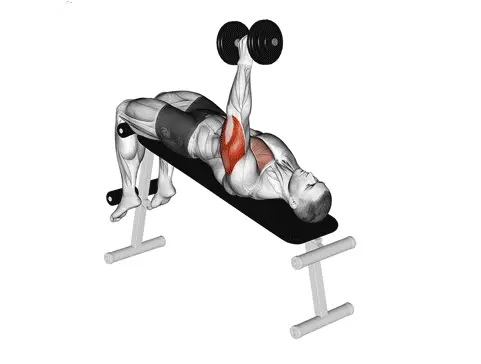
10. One-Arm Decline Dumbbell Bench Press:
This exercise targets the lower portion of the chest, specifically the sternal head of the pectoralis major, along with the triceps and front deltoids.
To start, lie on a decline bench with one arm holding a dumbbell and the other extended to the side for balance. Lower the dumbbell until your elbow forms a 90-degree angle, then press it back up to the starting position.
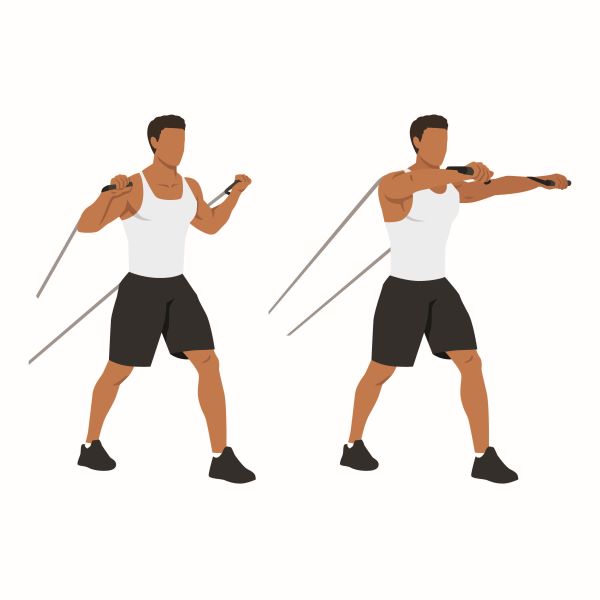
11. Chest Press with Resistance Bands:
While resistance bands are not dumbbells, I get it, but I decided to throw this one in as I have gotten great results from adding it to my chest routine. This exercise targets the entire chest, triceps, and front deltoids. Using this movement helps improve stability and coordination in the upper body.
To begin, secure a resistance band to a stable object and hold the other end of the round with both hands. Step forward to create tension in the band, then press your hands forward until your arms are fully extended in front of you.
I normally do this either at the beginning of the workout to warm up the chest or at the end to finish them off but it’s entirely up to you and your preference.
Incorporating these 11 dumbbell chest exercises into your workout routine can help you achieve a well-defined chest with increased strength and definition. Proper form is also essential to avoid injury and maximize the benefits of each exercise. Remember to start with lighter weights and gradually increase as you progress.
These are just some suggestions but at any rate, remember when selecting exercises for your dumbbell chest workout, it’s important to choose exercises that target different areas of the chest and routines that work other muscles in the chest and upper body. This helps to create a balanced, well-defined chest and reduces the risk of injury.
It’s also important to maintain proper form throughout each exercise. This includes keeping your back flat and stable, engaging your core, and avoiding excessive arching of the back or flaring of the elbows. By using the proper form, you can maximize the effectiveness of each exercise and reduce the risk of injury.
The Wrap Up
No matter what your fitness goals are, everyone can benefit from having a strong chest. It helps you perform daily pushing, pulling, and lifting activities, improves upper body posture, and reduces the risk of shoulder pain.
Adding dumbbell exercises into your chest workout routine effectively builds strength and definition in your chest. With various exercises, it’s easy to target different areas of the chest and other muscles in the upper body.
Remember to start with lighter weights and gradually increase as you progress, and always use proper form to get the most out of each exercise.


